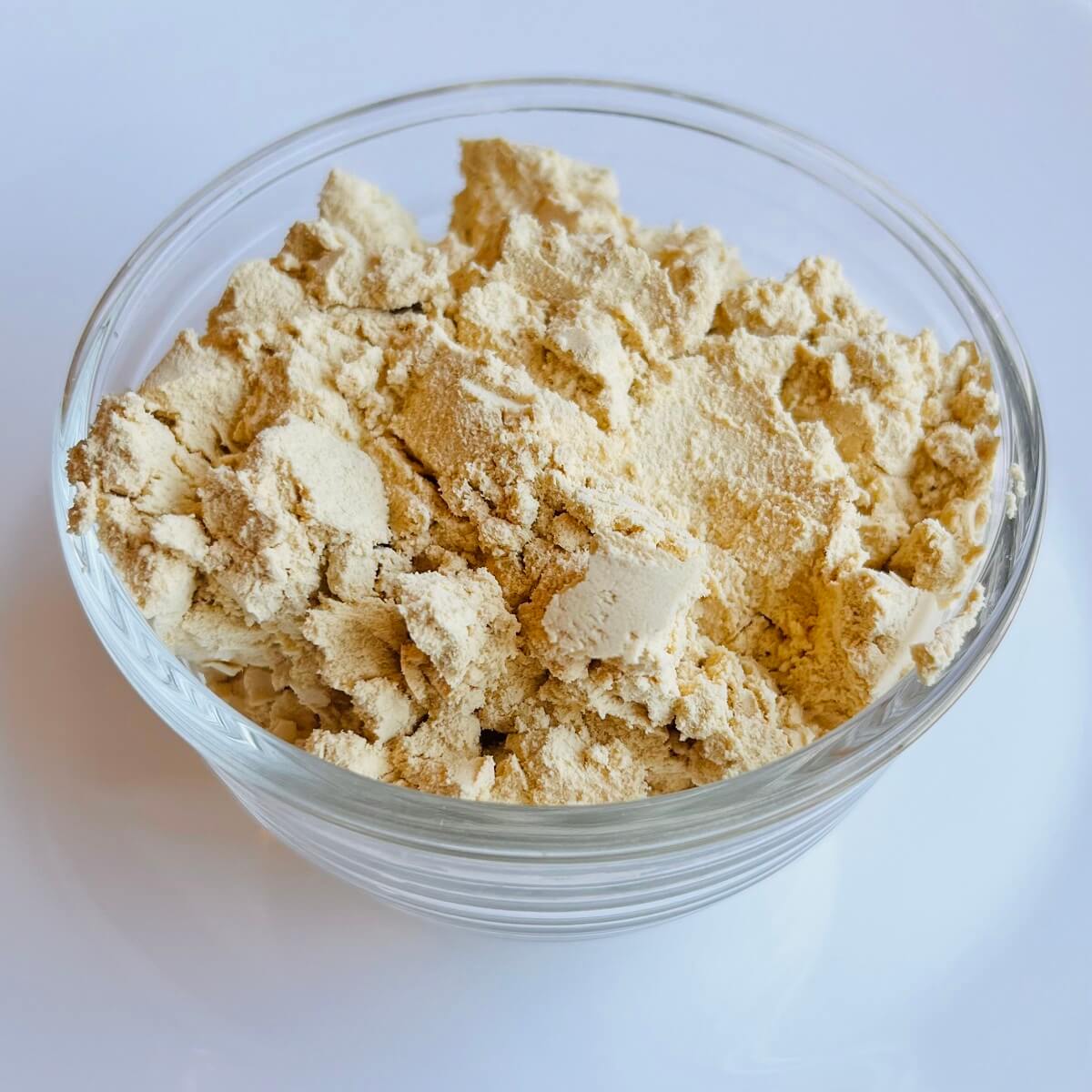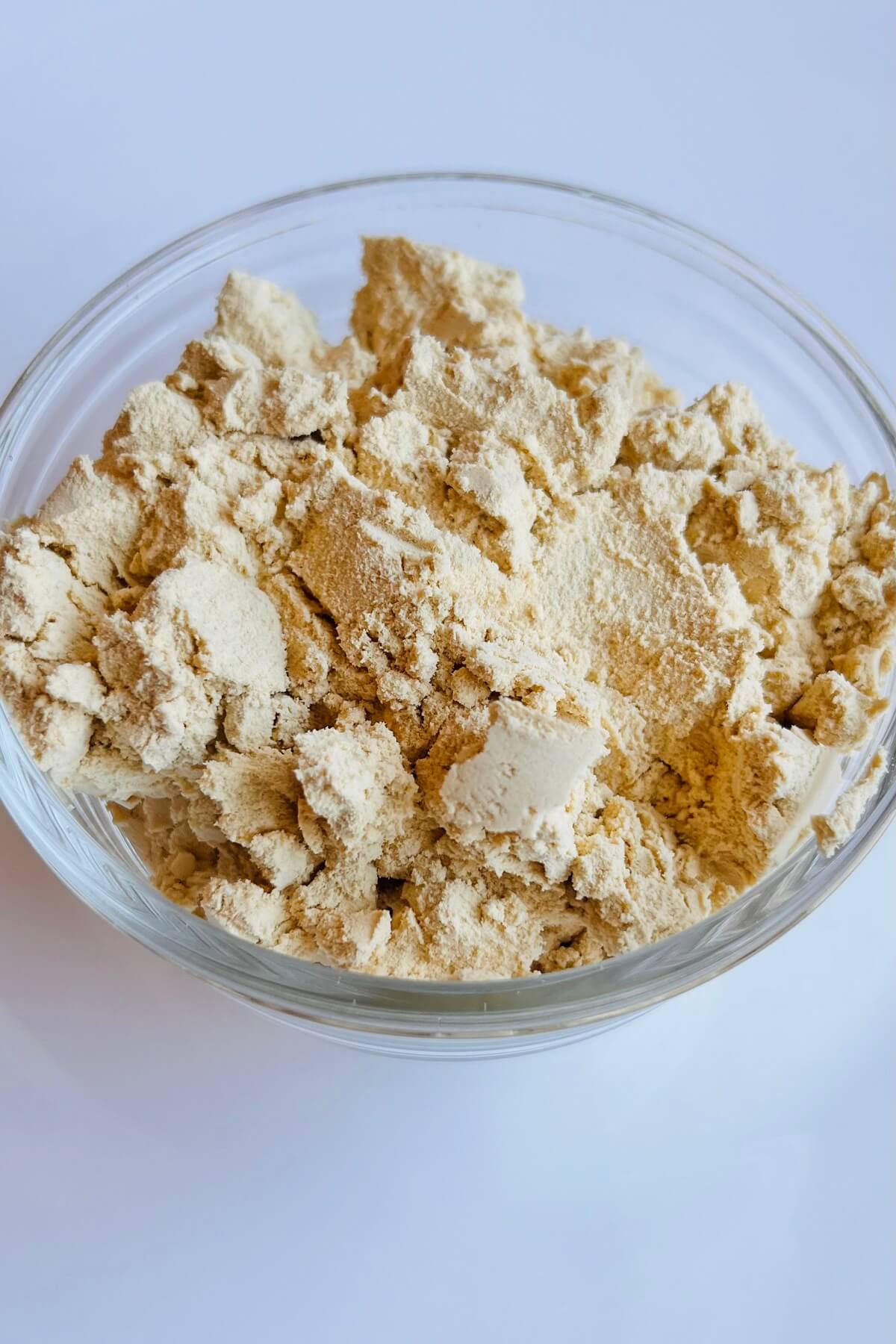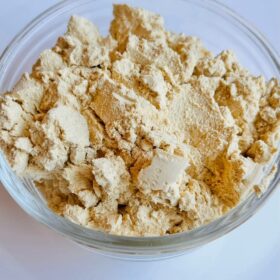If you’re comparing pea protein vs soy protein and aren’t sure which one to choose, this overview may help you make an informed decision. These two plant-based protein options have distinct characteristics in terms of taste, nutritional composition, allergenic potential, environmental impact, and cost.
Pea Protein vs Soy Protein
Pea protein offers an easily digestible alternative, while soy protein provides a complete amino acid profile and affordability. Understanding the differences between pea protein vs soy protein is helpful for individuals aiming to make informed dietary choices aligned with their nutritional needs, ethical considerations, and environmental concerns. Here’s an overview of the key differences between pea protein and soy protein:
Source
Pea Protein

Pea protein is derived from yellow peas, also known as Pisum sativum. Yellow peas are a type of legume and are commonly used in food production, including as a source of plant-based protein. They are often grown in regions with cooler climates and are known for their nitrogen-fixing properties, which can benefit soil health.
Soy Protein
Soy protein comes from soybeans, which are the seeds of the soybean plant, scientifically known as Glycine max. Soybeans are a staple food in many cultures and are widely cultivated around the world, with major producers including the United States, Brazil, Argentina, and China. Soybeans are versatile and used in various forms, including whole beans, tofu, tempeh, soy milk, and soy protein isolates.

Both pea protein and soy protein offer plant-based protein options for those following vegetarian, vegan, or plant-based diets, as well as individuals looking to reduce their consumption of animal products. However, the specific source of each protein can influence factors such as taste, texture, allergenicity, and environmental impact, which are important considerations when choosing between the two.
Allergies
Soy Protein Allergies
Soy protein is one of the top eight allergens, along with milk, eggs, wheat, peanuts, tree nuts, fish, and shellfish. Soy allergies are relatively common, especially among infants and children. Individuals with soy allergies need to avoid soy products and ingredients derived from soybeans.
Pea Protein Allergies
Pea protein is less likely to cause allergic reactions compared to soy protein. However, it’s still possible for individuals to be allergic to peas or legumes in general. Individuals with pea allergies should avoid pea protein and products containing pea-derived ingredients.
When choosing between pea protein vs soy protein, individuals with allergies or sensitivities should carefully read ingredient labels and consult with healthcare professionals to determine which option is suitable for their dietary needs and restrictions.
Amino Acid Profile
Soy Protein Amino Acid Profile
Soy protein is considered a complete protein because it contains all nine essential amino acids in sufficient quantities. These essential amino acids are ones that the body cannot produce on its own and must obtain from dietary sources. Soy protein is particularly rich in amino acids like lysine, which is often limited in other plant-based protein sources. As a complete protein, soy protein is beneficial for supporting muscle growth, repair, and overall health.
Pea Protein Amino Acid Profile
Pea protein, on the other hand, is not considered a complete protein because it lacks sufficient amounts of one or more essential amino acids, typically methionine and cysteine. However, pea protein can be combined with other plant-based protein sources that complement its amino acid profile to create a complete protein. For example, combining pea protein with rice protein can provide a balanced amino acid profile similar to that of animal-based proteins.
Digestibility
Soy Protein Digestibility
Soy protein can be harder for some individuals to digest due to certain compounds present in soybeans, such as oligosaccharides and trypsin inhibitors. These compounds can contribute to bloating, gas, and digestive discomfort in some people.
Additionally, soy protein contains high levels of phytic acid, which can inhibit the absorption of minerals like iron, zinc, and calcium. Some individuals may experience digestive issues when consuming soy products, especially in large quantities or if they have underlying digestive conditions.
Pea Protein Digestibility
Pea protein is generally easier to digest compared to soy protein for many people. It contains lower levels of anti-nutrients like phytic acid, which may interfere with mineral absorption. Additionally, pea protein is naturally free of common allergens like gluten and lactose, making it a suitable option for individuals with sensitivities or intolerances to these substances. The digestibility of pea protein may vary depending on individual factors such as gut health, digestive enzymes, and overall dietary habits.
Taste and Texture
Soy Protein Taste and Texture
Soy protein can have a slightly beany or earthy taste, which some people enjoy but others may find off-putting. The texture of soy protein can also vary depending on the form in which it is consumed.
For example, soy protein isolate powder often has a fine texture and can be easily mixed into smoothies or baked goods. Tofu, another popular form of soy protein, has a soft and slightly spongy texture that can absorb the flavors of other ingredients in a dish.

Pea Protein Taste and Texture
Pea protein typically has a milder taste compared to soy protein. It has a smoother texture and is less likely to have a strong aftertaste, making it more palatable for some individuals.
Pea protein powder is commonly used in protein shakes, smoothies, and baked goods as a dairy-free and gluten-free alternative to whey protein. Pea protein isolate tends to have a finer texture compared to whole pea protein, which may have a slightly grittier consistency.
GMO Concerns
Soy Protein GMO Concerns
Soybeans are one of the most commonly genetically modified (GMO) crops worldwide. Genetically modified soybeans are engineered to be resistant to herbicides, which allows for more efficient weed control during cultivation. As a result, many soy protein products on the market may contain GMO ingredients unless specifically labeled as non-GMO or certified organic. Some consumers have concerns about the potential health and environmental impacts of consuming GMOs, while others prioritize choosing non-GMO or organic options for personal or ethical reasons.
Pea Protein GMO Concerns
Peas are generally less likely to be genetically modified compared to soybeans. While there have been some developments in genetically modifying peas for specific agricultural purposes, such as pest resistance or improved crop yields, genetically modified peas are not as prevalent as GMO soybeans. As a result, pea protein products may be perceived as a safer option for individuals seeking non-GMO or organic protein sources.
For consumers who prioritize avoiding GMOs in their diets, choosing certified organic or non-GMO verified soy protein or pea protein products can provide assurance that they are not consuming genetically modified ingredients. Additionally, supporting brands that are transparent about their sourcing practices and prioritize sustainability and ethical farming methods can help consumers make informed choices that align with their values.
Environmental Impact
Soy Protein Environmental Impact
Soybean cultivation can have significant environmental impacts, especially when grown as a monoculture crop. Large-scale soybean production often involves deforestation, habitat destruction, and biodiversity loss, particularly in regions like the Amazon rainforest where soybean cultivation is a major driver of deforestation. Additionally, soybean farming may require intensive use of pesticides, fertilizers, and water resources, contributing to soil degradation, water pollution, and greenhouse gas emissions.
Pea Protein Environmental Impact
Pea protein generally has a lower environmental impact compared to soy protein. Peas are nitrogen-fixing legumes, which means they can convert atmospheric nitrogen into a form that can be used by plants, reducing the need for synthetic fertilizers.
Pea cultivation typically requires less water and fewer pesticides compared to soybean farming, making it a more sustainable option. Additionally, peas can be grown in rotation with other crops to improve soil health and reduce the risk of pests and diseases.
By choosing pea protein over soy protein, consumers can support more sustainable agricultural practices and reduce their environmental footprint. However, it’s important to consider other factors such as transportation emissions, packaging materials, and processing methods when evaluating the overall environmental impact of protein products. Opting for locally sourced, minimally processed, and eco-friendly packaging options can further enhance the sustainability of plant-based protein choices.
Price
Soy Protein Affordability
Soy protein is often more affordable compared to pea protein. Soybeans are widely cultivated around the world, especially in major producing countries like the United States, Brazil, Argentina, and China.
The abundance of soybeans contributes to lower production costs and competitive pricing for soy protein products. As a result, soy protein powders, bars, and other soy-based products are typically more budget-friendly options for consumers looking to incorporate plant-based protein into their diets.
Pea Protein Cost Considerations
Pea protein tends to be slightly more expensive than soy protein. While peas are also cultivated on a large scale and are widely available, factors such as processing methods, demand, and market trends can influence the cost of pea protein products. Additionally, pea protein isolates, which undergo further processing to remove carbohydrates and fats, may be priced higher than whole pea protein concentrates. Despite the higher cost, some consumers are willing to pay a premium for pea protein due to its perceived health benefits, digestibility, and sustainability.
Wrapping Up: Soy Protein vs Pea Protein
Ultimately, the choice between pea protein vs soy protein depends on individual preferences, dietary needs, and considerations such as taste, allergenicity, environmental impact, and budget. By carefully evaluating these factors, consumers can make informed decisions to support their nutrition, lifestyle, and sustainability goals.

You Might Also Like
- This post about vegan foods rich in iron is helpful if you’d like to boost your iron intake while sticking to a plant-based diet.
- This list of magnesium sources for vegans may introduce you to some delicious magnesium-rich, plant-based foods.
